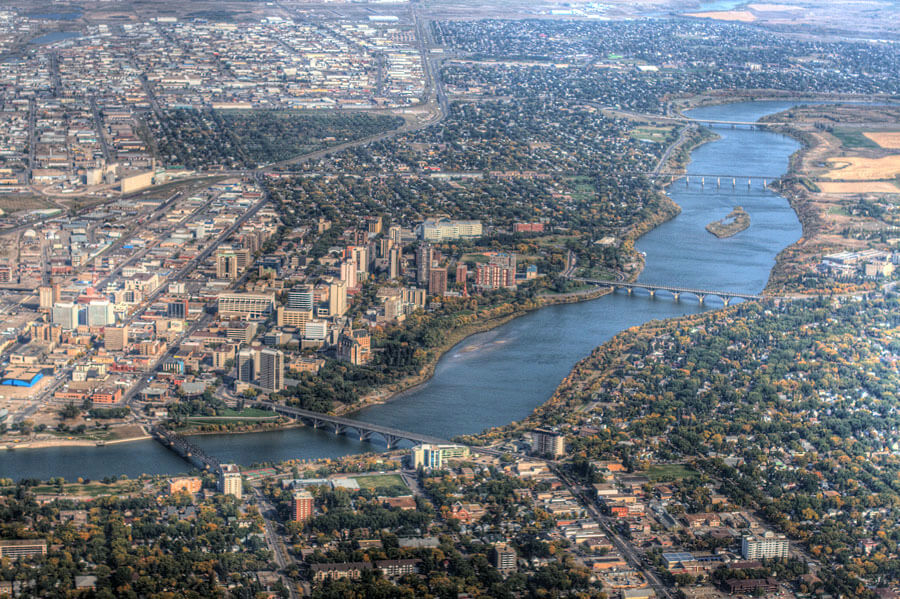What To Expect In 2014 Province By Province: Saskatchewan
By: Gary Parkinson on January 22, 2014 Ever since 2007, the economy of Saskatchewan has been booming stronger than any province in Canada, rivaling the economic strength of Alberta. Economic growth contributed to strong net gains in housing sales and average prices, with new housing starts rising or falling based on supply.
Ever since 2007, the economy of Saskatchewan has been booming stronger than any province in Canada, rivaling the economic strength of Alberta. Economic growth contributed to strong net gains in housing sales and average prices, with new housing starts rising or falling based on supply.
Approximately 40 percent of Saskatchewan’s population lives in the province’s two largest cities, with both markets maintaining strong annual growth. Does that mean you can expect greater buying opportunities in Regina or Saskatoon this year? And what will happen with housing across the rest of the province?
Variable or Fixed Mortgage
You alone must decide what the best type of mortgage is to address your financial needs. Canadian banks, starting with RBC, are lowering many fixed year mortgage plans by 10 basis points in an effort to entice more prospective buyers. However, variable mortgage rates remain well below average fixed year plans.
Despite the potential short term savings, many Saskatchewan homeowners prefer the stability of fixed year mortgages. If you or your neighbourhood is connected to the potash industry, a fixed mortgage would help you through the transition over the next few years. The province’s potash exports dropped significantly due to weaker demand from China and India in 2013, slowing down the industry as a whole.
2013
CMHC pegged 2012 as the peak year for new housing starts in Saskatchewan, and indeed fewer new homes were built in 2013. There was a sharp decline of nearly 1,000 new single detached homes under development in 2013 compared to 2012, though the drop off was less significant for multiunit buildings. However, construction on both types of homes did remain above traditional rates.
Declining construction is due in part to the potash slowdown, but also the variance between supply and demand. The number of Canadians relocating to Saskatchewan fell in 2013 compared to recent years, but outside of potash, very little of that decline had to do with the province itself. Economic conditions in Ontario, while still weak, are encouraging Ontarians to remain near home, while ongoing strength in Alberta entices many interprovincial migrants.
Fewer new residents relocating to Saskatchewan decreased net demand for housing, just as the province invested in higher than average developments in 2012. This contributed to fewer sales in 2013, but average prices did continue to rise, albeit at a subdued pace.
Home Price Predictions 2014
If 2012 was the peak year and 2013 the expected drop off in activity, the prediction for 2014 is a more stable market than the last two years. Realtors in the province’s two largest cities noted that the start to the new year is significantly stronger than in 2013, and expect the market to remain active as Canada’s big banks, as well as the Bank of Canada committed to maintaining affordable mortgage rates.
Total home sales are expected to match or slightly exceed net sales at the end of 2013. Demand for housing will drop slightly on a year over year basis, but will remain strong enough for sellers to increase asking prices on their existing homes across MLS listings.
Experts forecast prices will climb, though the rate of ascent will slow due to slightly softer conditions. By the end of 2013, home prices across Saskatchewan averaged around $285,000, with more expensive prices around Regina and Saskatoon. The CMHC forecasts average prices will climb above $290,000 by the end of this year, though the net year over year gain will be lower than from 2012 into 2013.
Saskatoon
The province’s largest city was the most affected region by the slowdown in potash extraction and exportation. Saskatoon is home to the world’s largest producer of potash, PotashCorp, which lay off over 1,000 employees only weeks before the holidays last year. As a result, many residents are more concerned about job prospects than new homes, though Saskatchewan as a whole maintains the lowest unemployment rate in Canada at 4.1 percent.
The most striking forecast for Saskatoon is that the price growth rate will be less dramatic than in 2013. Prices jumped from 2012 to 2013 by over $10,000, but will rise by a lesser amount throughout 2014. Greater supply and less notable price gains could make 2014 an excellent opportunity for you to invest in a home in Saskatoon.
Regina
Housing trends in Regina are forecast to mirror those in Saskatoon, with rising prices and greater volumes of sales expected in 2014 compared to 2013. Also similar to Saskatoon, the provincial capital will invest more into single detached homes rather than multiunit complexes. However, developments in both cities are forecast to decline compared to 2013.
Regina’s early year spike in housing inquiries has many realtors showing properties in the Lakeridge, Glencairn and Glenelm Park neighbourhoods. Listings in these areas primarily range between $350,000 and $450,000 per home. With mortgage rates remaining relatively flat and price gains forecasted to remain muted, you could find a home of your own in the heart of Saskatchewan’s capital.
Northern Saskatchewan
Housing prospects in regions located north of Saskatoon up towards Meadow Lake will vary depending on the community. Areas surrounding Lloydminster along the border with Alberta will benefit economically from increased natural resource development, which will in turn yield greater values for homes in the community.
On the other hand, lumber mills in Prince Albert are continuing downsizing that began in mid-2013. But the lumber industry could pick up again throughout 2014 as a lower trading dollar will increase demand for Canadian raw materials in the US and elsewhere. If forecasters are correct, buying a home in the community today could be more affordable than six months from now.
The northern half of the province is less populated than the south, with more rural communities rather than urban areas for development. For example, the community of Stony Rapids relies primarily on its airport to help people in and out of the region. As a result, MLS listings typically provide fewer units for sale in northern Saskatchewan than in the southern half of the province.
Closing Thoughts
For all the talk of a soft landing being in Canada’s best interests, Saskatchewan is the province that perhaps best represents the concept in practice. The provincial economy has been booming since 2007, allowing housing to reach its peak by 2012. Now the province is in excellent shape to manage existing inventory, and add new prospects wherever possible.
With prices rising at a slower pace and mortgage rates remaining more or less flat, you could find plenty of opportunities to upgrade to a new home, or enter the market as a first time buyer. Keep in mind that sellers may hold out for their MLS listing prices given that the economy remains strong. Therefore, you may want to put in offers or inquiries into multiple homes in case a particular seller remains inflexible on the asking price.


.jpg?itok=tIiHyjyb)